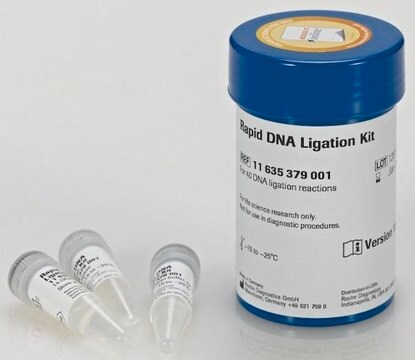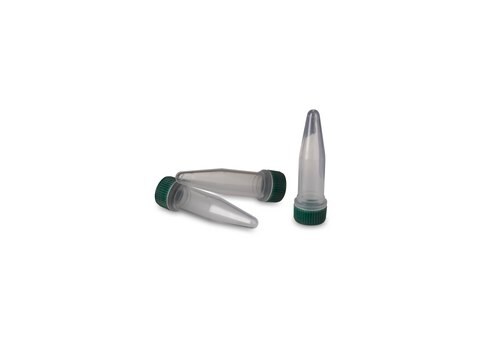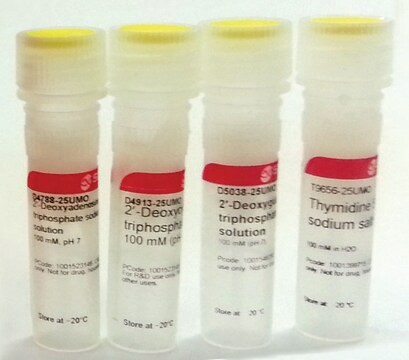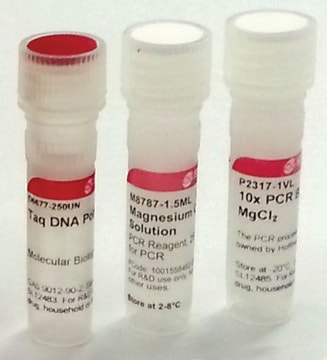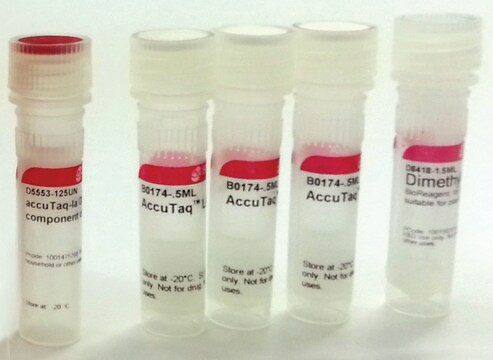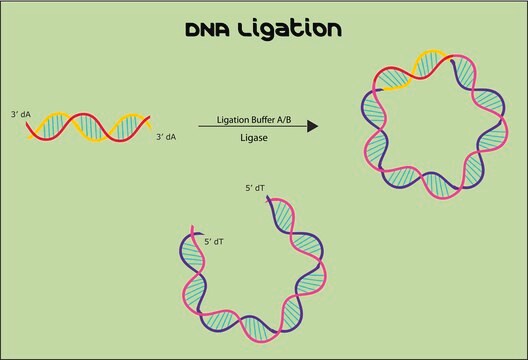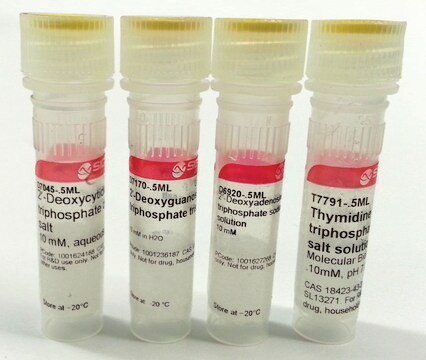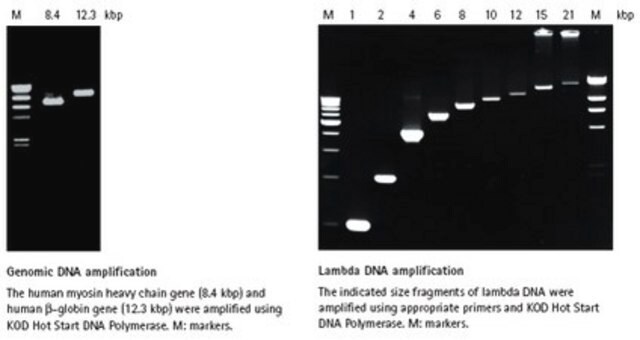D2886
DNA Ligase from T4-infected Escherichia coli
buffered aqueous glycerol solution
Synonym(s):
Polydeoxyribonucleotide Synthase, Polynucleotide Ligase, T4 DNA Ligase
About This Item
Recommended Products
grade
for molecular biology
Quality Level
form
buffered aqueous glycerol solution
specific activity
4,000 U/mL
mol wt
68 kDa
UniProt accession no.
storage temp.
−20°C
Gene Information
bacteriophage T4 ... 30(1258680)
Looking for similar products? Visit Product Comparison Guide
Related Categories
Application
- Ligation of blunt ended or cohesive DNA fragments
- Ligation of cloning vector and restriction insert fragments
- Seal nicks in double stranded DNA and RNA or DNA/RNA hybrids
- Couple RNA single strands by bridging oligonucleotide adapters
Biochem/physiol Actions
Components
Unit Definition
Other Notes
related product
Signal Word
Danger
Hazard Statements
Precautionary Statements
Hazard Classifications
Resp. Sens. 1
Storage Class Code
10 - Combustible liquids
WGK
WGK 1
Flash Point(F)
Not applicable
Flash Point(C)
Not applicable
Personal Protective Equipment
Choose from one of the most recent versions:
Already Own This Product?
Find documentation for the products that you have recently purchased in the Document Library.
Customers Also Viewed
Protocols
T4 DNA Ligase catalyzes the formation of a phosphodiester bond between the terminal 5′ phosphate and a 3′ hydroxyl groups of duplex DNA or RNA. The enzyme efficiently joins blunt and cohesive ends and repairs single-stranded nicks in duplex DNA, RNA or DNA/RNA hybrids.
Our team of scientists has experience in all areas of research including Life Science, Material Science, Chemical Synthesis, Chromatography, Analytical and many others.
Contact Technical Service
